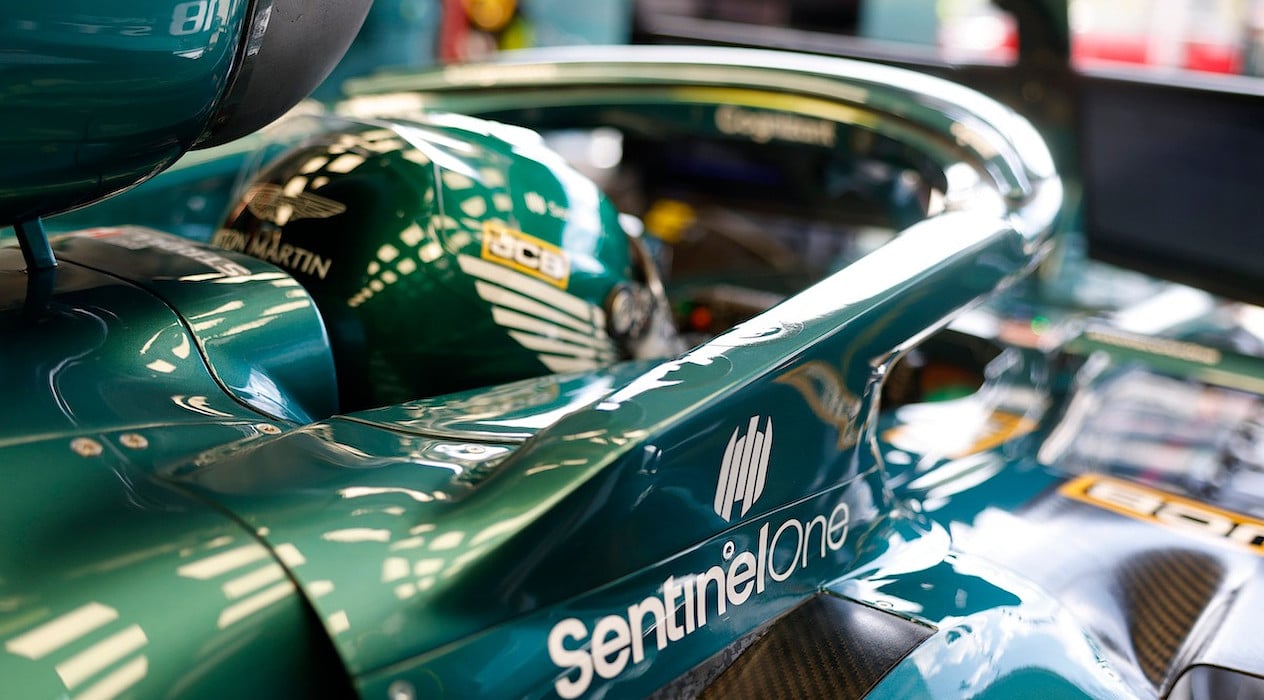
In partnership with SentinelOne, we’re exploring the technical advances that have made Aston Martin Cognizant Formula One™ Team’s AMR21 a standard-bearer for safety within world motorsport.
While SentinelOne automates processes to resolve cyberspace threats, Aston Martin Cognizant Formula One™ Team has a range of engineering solutions to mitigate the risks of motorsport.
From recent advances such as the halo cockpit protection device to wheel tethers that reduce risks in an accident, the legacy of improved safety standards is within all Formula One cars.
The safe machines of the modern era can be traced all the way back to the pursuit of greater safety led by Jackie Stewart in the 1960s.
After a serious crash at Spa-Francorchamps in 1966, Stewart recognised greater safety strides could be made and brought driver safety to the fore. During his career, he would advocate for mandatory seatbelts and safer crash helmets, while also calling on circuits to become safer.
Sebastian Vettel explains driver kit
Innovation is key in Formula One, from track performance to safety. Join Sebastian Vettel, as he takes you on a tour of the kit that keeps him safe, secure and protected. While we work hard to keep our drivers safe, SentinelOne are working just as hard to keep our data safe.

Important advances were made in the following decades, and few were more important than the survival cell, which arrived in 1981 as Formula One pioneered carbonfibre technology from the aerospace industry.
After the tragic events of Imola in 1994, Formula One and the FIA embarked on a further safety revolution, and the results remain a cornerstone of modern safety standards.
Improved barriers and run-off areas at circuits soon followed, the headrest and roll hoop were introduced, as well as accident data recording and wheel tethers. There was also the breakthrough HANS (Head and Neck Support) device that every driver wears to this day.
The FIA continues to regularly review and improve procedures, especially during the early stages of car design ahead of every season.
Passing the FIA safety tests is a key part of car development and is factored into the development of every Formula One car as over 15,000 parts come together to form a racing machine.
The story of the AMR21
Discover how the AMR21 came to life with our in-depth development feature. Go behind the scenes into the secretive world of building a Formula One car and follow its journey from idea to the racing track.

Safety structures are built around the entire chassis, from the monocoque to the front, side and rear impact structures.
Load and impact testing, anti-intrusion side panels, and the Halo are also strictly tested to ensure high standards of safety. The halo is a feat of engineering, able to withstand the weight of a London double-decker bus.
A series of dynamic and static tests are designed to simulate high-speed crashes, and the resulting g-forces and debris help validate the chassis design.
Testing also includes a chassis being fired at a solid wall and a side-impact test in which the chassis must stand up to significant force without incurring structural damage.
But safety testing does not stop when the chassis reaches the race bays because manufactured developments and upgrades must undergo various inspection tests and proof-loading before being added to the car.
Like Formula One’s development race, the FIA and Formula One will never relent in the pursuit of their goals. Every crash is a lesson to be learned, and a potential improvement can be right around the corner.
Access I / AM to get closer to the team.































